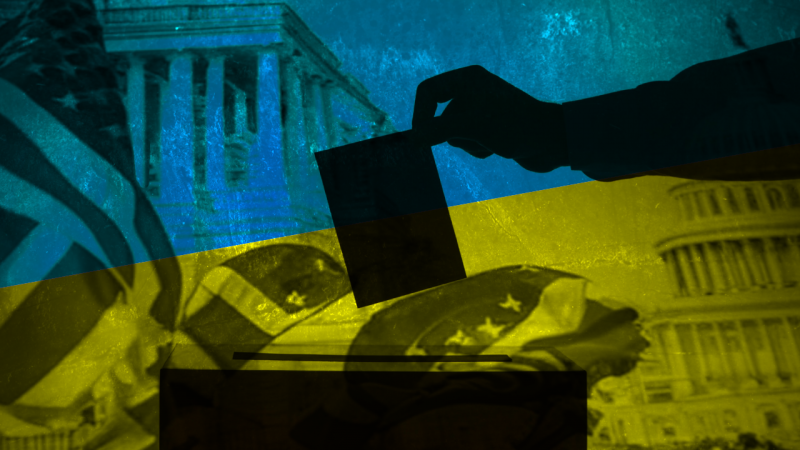On the last day of April of this year, a report in the London newspaper The Times citing British officials stated that, although the Ukrainian Armed Forces were not prepared for the counter-offensive, they had no choice but to carry it out. The sources added that Ukraine was unlikely to achieve more than “modest territorial gains” by taking on the Russian armed forces. They assured that this was the opinion of US intelligence analysts.
A few days later, on May 10, the adviser to the head of the Ukrainian Presidential Office, Mikhail Podoliak, stated that the conflict between Russia and Ukraine is not “a Hollywood movie”. Therefore, it was not necessary to expect the Kiev counteroffensive to be “a turning point. It doesn’t work like that,” Podoliak said. According to the official, “it’s not a matter of a week or a month. It is a matter of many events, because one can be more successful [one day] and another less.” He added that the counteroffensive may not be a single event, but a series of events over time: “There is no scenario in which that we can stop in the middle”,
In this regard, Ukrainian Defense Minister Olexii Reznikov told the Washington Post that expectations of a Ukrainian counteroffensive were overestimated. He expressed the following: “Most people are expecting something big, which can lead to emotional disappointment. Western partners told me that now they need the next success story, because we have to show it to our peoples… But I cannot tell you what the scale of this success will be. Ten kilometers, 30 kilometers, 100 kilometers, 200 kilometers? Ideally, the offensive should cut off the rear lines of the Russian troops and reduce their offensive capabilities.”
All these statements together give the impression of preparing the public opinion for the failure of an action initiated under time pressure, given that it had been dubbed the “spring counteroffensive” and therefore had to start soon.
The G-7 meeting in Hiroshima last May seemed to influence the early start of such an operation. There it was established that what was taking place in Ukraine was a confrontation between democracies and autocracies. Hence the importance for the West of the much-mentioned counter-offensive. In reality, this offensive responds more to Western interest than to those of the Ukraine.
It has been “sold” that the counteroffensive will end up unbalancing the war definitively in favor of Ukraine. The problem is that this action and its success depended on the collapse of the Russian economy, which would not allow Moscow to respond successfully to it.
Likewise, it has been suggested with profuse insistence that the arrival of the Patriot anti-aircraft systems first, the Leopard, Abrams and Challenger tanks later, as well as the Storm Shadow long-range missiles and F-16 planes now, would be decisive for the outcome. of the conflict.
Nothing of that has happened.
In recent days, the Western media has begun to talk about the possible failure of the counteroffensive, reflecting the West’s fear of the consequences this could have on its citizens. It has even been said that, although there is no counteroffensive, it has already been a success because it has forced Russia to fortify a large part of the territory , which has forced the expenditure of a large amount of resources that were not foreseen. An opinion that does not withstand the slightest serious analysis.
Fear is beginning to spread in many sectors. And the cracks are becoming more visible. Questions that reflect doubts and uncertainty are becoming more common every day. The triumphalism of the propaganda campaigns is beginning to take its toll. Opinions collide: politicians reflect desires, the military, realities. There have been no victories to show nor does it seem that there could be in the medium and long term.
The specter of the US elections hangs over the Ukrainian government and over Europe. The possibility of a republican victory that will close or at least considerably reduce the flow of aid to kyiv exposes a fear that is not hidden in the European capitals. In any case, the apprehension does not emanate from love and concern for the people of Ukraine who are being used as cannon fodder to defend Western interests, but from the impact that a probable Russian victory in the conflict and the failure of the United States, NATO and Europe in the same way.
If the counter-offensive does not work, it will leave a mark on the conscience of European citizens, especially if the conflict lasts for a long time and the governments’ capacities to respond to the needs of the people diminish and they will begin to ask how long their taxes will continue to be used to send weapons to Ukraine, while their own problems go unaddressed.
After many announcements, the counteroffensive seemed to have started last Sunday June 4 with an operation in five directions first and in seven two days later, producing a total of three days of combat on all fronts, the loss by Ukraine of up to 3,715 soldiers, 52 tanks, 207 armored vehicles, 134 cars, five planes and two helicopters, without Kiev being able to achieve its objectives according to the Russian defense ministry.
For their part, open sources accounted for the confirmed destruction of 77 Ukrainian tanks, infantry fighting vehicles, and armored personnel carriers. In reality, the number is clearly higher, but in this case, we are only talking about confirmed losses.
If we stick to these figures – which are not exact – judging by the amount of equipment destroyed, the Ukrainian troops lost around 7-7.5 thousand combatants – dead or injured – in eight days of offensive in which they have used an inexplicable tactic of frontal attacks against the well-established Russian defense dislocated on terrain that has been soundly prepared from an engineering point of view.
It must be said, that in these first days, a significant part of the Ukrainian vehicles was hit before approaching the Russian positions, which is the result of dense mining and good interaction with aviation and artillery. In any case, President Putin himself has warned that Russia cannot be trusted because the Ukrainian formations still have significant reserves and have not delivered the main blow yet.
Two weeks after the start of the offensive by the Armed Forces of Ukraine, it has become clear that their army did not show original or lucid tactics on the ground, which led them to lose the most active (and mobile) part of their vanguard.
Heavy losses in both personnel and equipment led to planning, based on a rapid advance of 20-40 km, having failed. This forced the Ukrainian command to make adjustments: one of the tasks of the reserve plan in each of the directions now seems to be not a deep breakthrough into the defensive line of the Russian Armed Forces, but the expansion of the heads of bridge that they manage to obtain in the west and east in order to be able to move additional reserves. This is what has started to be verified as of June 13-14, but it hasn’t worked either.
Ukraine has shown an operational inability to introduce its reserves and that, in an offensive, is essential. It can be concluded that the great blows that Russia has dealt to its transport and logistics are beginning to weigh. About 65% of the means sent to the offensive in the first days were destroyed or disabled.
On the other hand, Russia has demonstrated a new tactical modality that the Ukrainian armed forces have been slow to grasp. The Russian army abandons small towns or hamlets whose coordinates have previously been studied with precision. They have been occupied by Ukraine, which has celebrated their capture to the great delight of its commanders and the uproar of the acolyte media that with bombastic headlines point out “the first successes of the counteroffensive.”
But just a few hours later, the reduced space captured and the timely artillery, aerial and missile preparation prior to that, struck with extraordinary precision and forcefulness the surprised Ukrainian forces that have been forced to abandon the “occupied” territories. The unusual thing about this is that they have repeated it several times in the same place. An emblematic case is the village of Piatijatki, where Ukraine has suffered gigantic and unnecessary casualties only understood by the clumsiness of the political leadership that sends its young soldiers to certain death, just to comply with the demands for continuity of the offensive ordered from Washington, Brussels, London and Berlin.
The desperation of NATO and the European Union (EU) is clear. On Sunday the 11th, the EU said in a statement that it will speed up the delivery of weapons to Kiev, although it has also admitted that the conflict could still continue for months.
The New York Wall Street Journal went so far as to say that the “counteroffensive is over” and that “the Ukrainian Armed Forces have suffered enormous losses,” forcing the commanders to halt operations to study other ways to break through the Russian lines of defense. defense and solve the problem caused by air inferiority.
For its part, the New York Times announced with alarm that: “Some of the highly publicized allied-donated weapons have become so decrepit that they were deemed fit only to be cannibalized for spare parts.” In the same vein, on June 17, the Washington Post, after interviewing unnamed experts, stated that Ukraine was unlikely to make rapid progress in the counteroffensive.
They have lately discovered that Russia solidly fortified the probable attack zones, transforming them into real headaches for the Ukrainian military leaders. It is worth saying that the Russian High Command was successful in determining the main directions of the Ukrainian offensive, concentrating forces and means and eliminating the decisive factor of surprise that could have favored Kiev. This allowed Russia to destroy, in the first days, a large amount of weapons and equipment that has made the success of such an action even less viable by stopping and/or slowing down the offensive that has finally been carried out through the spaces where Russia has concentrated the best of its forces and means, leading the Ukrainian armed forces to a true hell of fire, destruction and death.
We will have to wait and see what the beleaguered Ukrainian command will do. Under current conditions, it would not be strange if Russia were the one to unleash an offensive in the north, forcing Ukraine to redeploy its reserves to face such an action, definitively paralyzing its offensive. If this happens, it will be the beginning of the end of such a mythological and fanciful operation.









Leave a Reply